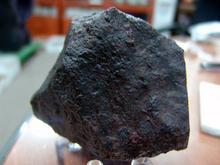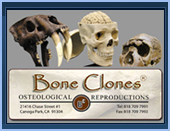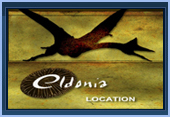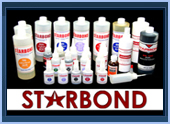Hadidah(Ar-Rub al-Khali) meteorite
The Wabar Meteorite Impact Site, Ar-Rub Al-Khali Desert, Saudi Arabia
by: Jeff Wynn and Gene Shoemaker (deceased)
We have completed detailed geologic mapping and geophysical surveys at the Wabar meteorite impact craters complex in the core of the Ar-Rub Al-Khali (Empty Quarter) region of Saudi Arabia. The crater complex and its associated ejecta field are largely contained within a 500 meter by 1,000 meter, roughly elliptical area located in the north-central core of the Ar-Rub Al-Khali desert of Saudi Arabia, about 550 kilometers by air southeast of the capital Riyadh.
Figure 1: Index map showing the location of the Wabar meteorite impact site in the Empty Quarter (Ar-Rub Al-Khali) desert of Saudi Arabia. Harry St. John (Abdullah) Philby reported the visual siting of a huge fireball passing over the then-mud-walled town of Riyadh in 1863, heading in the direction of what we now know to be the Wabar site.
The impact site is known to bedouin tribes in the region as "Al-Hadida", [Arabic for "the iron" or "the iron thing(s)"]. We installed survey monuments, including a large PVC mast (see Figure 2) at the apparent downrange (southeast) end of the crater field; its GPS coordinates are 21o 30.153'N by 50o 28.445'E.
Wabar can be reached by four-wheel-drive vehicles only with great difficulty, usually requiring several arduous days of travel, owing to the lack of any landmarks and the presence of continuous moving sand dunes for the last 250 kilometers of the most direct route there. We reached the site using Hummer vehicles in about 17 hours driving time using GPS devices to locate ourselves. Because of high ambient temperatures, the soft irregular dunes, and the remoteness of the site, it is inaccessible by fixed-wing aircraft or helicopters. The site is difficult to work in; daytime temperatures commonly reach 50 degrees Centigrade (122 degrees Farenheit) or higher. While conducting a magnetometer survey in May 1994 one of us (J. Wynn) measured a mid-day temperature of 61 degrees Celcius under a protective tarp (an ambient air temperature of 142 degrees Farenheit).
The Wabar impact site is completely engulfed in sand, and there is no evidence of outcrop within at least 5 kilometers. Within the site itself, there are at least three crater rims or parts thereof visible, that is, not yet covered by encroaching dunes; these craters are approximately 11 meters, 64 meters, and 116 meters in diameter (see figure 3). From these we calculated a minimum original mass of the bolide at about 3,500 tons, with an impact (kinetic) energy of about 10 to 12 kilotons equivalent TNT (this is about 10 to the 21th power ergs, or comparable to the atomic bomb detonated over Hiroshima in August 1945). These energy values are approximate. The incoming bolide probably arrived at the upper fringes of the Earth's atmosphere with over 100 kilotons (TNT equivalent) of kinetic energy; it appears to have lost most of its energy during a shallowly oblique (probably between 20 and 45 degrees from the horizontal) passage before it hit the desert floor. The object arrived from roughly the N60W (300o) direction, i.e., the direction of modern Riyadh, capitol of the modern Kingdom of Saudi Arabia.
We feel there are probably other craters hidden in the moving sand, and we have scaled what must therefore be minimum impact energy values to compensate for the expected easier cratering in the sand. Note also that sand shears easily, so a greater percentage of energy is partitioned into heating the target material than usual. For rough scaling, a similar-sized hard-rock (shallow nuclear detonation) crater called "Jangle-U" can be found at the Nevada Nuclear Test Site in the southwestern United States. The Jangle-U crater is 78 meters in diameter and was formed by a 1.2-kiloton (TNT equivalent) device detonated shallowly beneath the surface. The crater-versus-energy modeling program we used was developed by Prof. Jay Melosh at the Lunar & Planetary Laboratory, University of Arizona.
There are three kinds of ejecta:
1. Rare, iron-nickel fragments of the original bolide. Generally these are small and usually highly oxidized when buried in the top 40 centimeters of sand; these samples are a type IIIa medium octahedrite. These were spalled off of the incoming bolide at initial contact with the sand as the reversed shock-wave reached the back of the object. When these fragments are found on the surface, they are covered by a black patina and are almost indistinguisable from the glass.
2. In the dense ejecta field there is also black, melted slag (we call this "glass") formed by admixture at the shock front of the impacting meteorite (7-10%) and the sand that it hit (90-93%). Almost all of the incoming iron-nickel asteroid was converted to this material in a turbulent, high-temperature mixing process that probably consumed a 30-meter hemisphere of local sand beneath the largest fragment within the first two seconds after impact.
3. There are also abundant bleached, shocked sandstone fragments (that we are informally calling "insta-rock" or impactite) formed from the sand by the pressure and heat of the impact shock wave.
Typically, the black slag-like "glass" was ejected at high velocity, initially as a rapidly-expanding cone-shaped liquid "jet" forming around the edges of the contact between the asteroid and the sand, later as part of a complex process forming a huge cloud of debris that towered over the impact site. This fireball probably looked like a nuclear-detonation mushroom cloud, and may easily have reached the stratosphere. Often, slower-moving chunks of white impactite were engulfed by this molten "glass" while the latter was still in the air. When the envelopment was complete, the temperatures were so high that it was common for the impactite fragment inside to have been converted to a bubbly, white glassy pumice. Contrary to earlier reports, we do not believe that there was any bedrock involvement at the Wabar site. Most of the proximal black glassy slag was derived from "jetting" into the air during the initial contact of the Wabar object, and additional glass was distributed northwestward by prevailing winds by the fireball cloud. Glass fragment size correlates inversely with distance from the crater rims, with fist-sized chunks of lava-like material found close to the crater rims, while droplets of 2-4 millimeters are common 850 meters northwest of the the Philby "A" crater.
The above photo contains two of the craters, designated the "11-meter" and "Philby-A" craters. This photo was taken looking southwest from the top of the seif dune shown in the site map above. The object on the left side of the photo is a magnetometer sensor-head. Our magnetic survey data are remarkable for the relatively low amplitudes (20-50 nT) observed in an area with 3,500 tons of iron dispersed over it. We believe the vast majority of the Wabar asteroid was vaporized. The magnetic data are noisy, with small gradients nearly everywhere suggestive of a magnetic survey carried out in a huge junk yard. The data make clear, however, that there is virtually no iron left within the crater rims themselves - the craters all correlate with magnetic lows. The few weak magnetic anomalies that do exist correlate weakly with the proximal ejecta fields.
Chemical analyses on small meteorite samples we collected are in good agreement with analyses on samples collected in 1932 and the mid 1960's; the original asteroid was about 94% iron, about 3.5% nickel, 0.22% cobalt, with up to 3.6 ppm iridium. The rest of the sample was primarily copper. Iridium is sometimes called a "sidereal element", something not commonly found on the Earth but relatively commonplace in asteroids. It was an iridium anomaly found world-wide at the Cretaceous-Tertiary boundary that initially suggested that the death of the Dinosaurs was caused by an asteroid impact event.
The sand samples we analyzed had substantially higher feldspar content than earlier reports, suggesting a new flux of felsic windborne sand since 1932. An earlier fission-track date of 6,400 years may be too old. From several lines of circumstantial evidence, including historical records of crater-filling and thermoluminescence measurements of sand underlying an impact breccia lens, we believe that the impact took place somewhere between 135 and 450 years ago. The TL measurements were made by Dr. Gillian Robertson, working in the laboratory of Prof. John Prescott in Adelaide, Australia, on impactite and quartz-sand samples collected from beneath the breccia lens of the Philby-A crater. Initial results give an outside age of about 450 years for the event.
Acknowledgements
Chemical analyses were carried out by Phil Aruscavage in Jeddah, Saudi Arabia. The thermoluminescence measurements were made by Dr. Gillian Robertson in the TL laboratory of Prof. John Prescott at the University of Adelaide in Australia. Prof. Jay Melosh and Dr. Betty Pierazzo of the Lunar & Planetary Laboratory, University of Arizona, generously provided time, helpful advice, and the crater-vs-energy modeling software. The authors wish to gratefully acknowledge the support of Sheikh Walid Y. Zahid, who supported and encouraged the three expeditions to the Wabar site, along with Bill Chasteen, Wafa' Zawawi, Tino Fenech, Kevin Bullock, Robin De'ath, Zahid T. Zahid, Steve Butler, Taha Jaffrey, M.D., and Tim Cooley who accompanied us, worked alongside us, and survived the heat, the sand, and the scorpions and camel-spiders that thrive in the deep desert. It seems to us that these people represent the true unselfish spirit of science.
석질운석 Ar Rub al Khali meteorite(L)  (해외배송 가능상품)
(해외배송 가능상품)
| 상품명 | 석질운석 Ar Rub al Khali meteorite(L) |
|---|---|
| 제조사 | 자체제작 |
| 원산지 | 사우디아라비아(Saudi Arabia) |
| 판매가 | 상담 |
| 상품코드 | P0000LUM |
| 수량 |   |

(최소주문수량 1개 이상 / 최대주문수량 1개 이하)







































 수량을 선택해주세요.
수량을 선택해주세요.





































